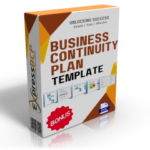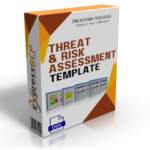Disaster Recovery and Business Continuity are often used interchangeably. However the truth is that there’s a slight difference between the two. The former for one primarily focuses on the IT &T (Information Technology & Telecommunication) aspects of a business. The latter, on the other hand, covers all or most of the critical processes. In other words, a plan for continuity is more likely to be comprehensive.
Let’s consider these examples to develop a better understanding of how (and if) the two are different:
Example 1: Say, an earthquake occurs. The process of resuming business after that earthquake can be seen as recovery.

And if you had planned for it in advance, the resumption part that is, what you actually did was disaster recovery planning (DRP). That said, even when you plan for relatively small disruptive events, such as malfunctioning of software caused by a computer virus, you are working on DRP.
Example 2: Suppose, your key staffers exit the company. Or for that matter, some of them are not well. Whatever the situation may be, you must continue operating, right? That’s where a business continuity plan (BCP) can come in handy because it’s aimed at making you overcome challenges that you may face from time to time.
But of course, it’s not only a business that needs some planning. Those who offer emergency services (police, paramedics, and fire brigade) can also benefit from disaster recovery planning software because the kind of events they deal with often involve a substantial loss of life.
These events, call them catastrophic, if you may, do not (or seldom) call for a BCP – therein lies the difference!






